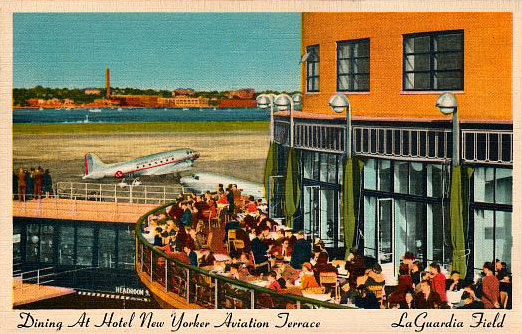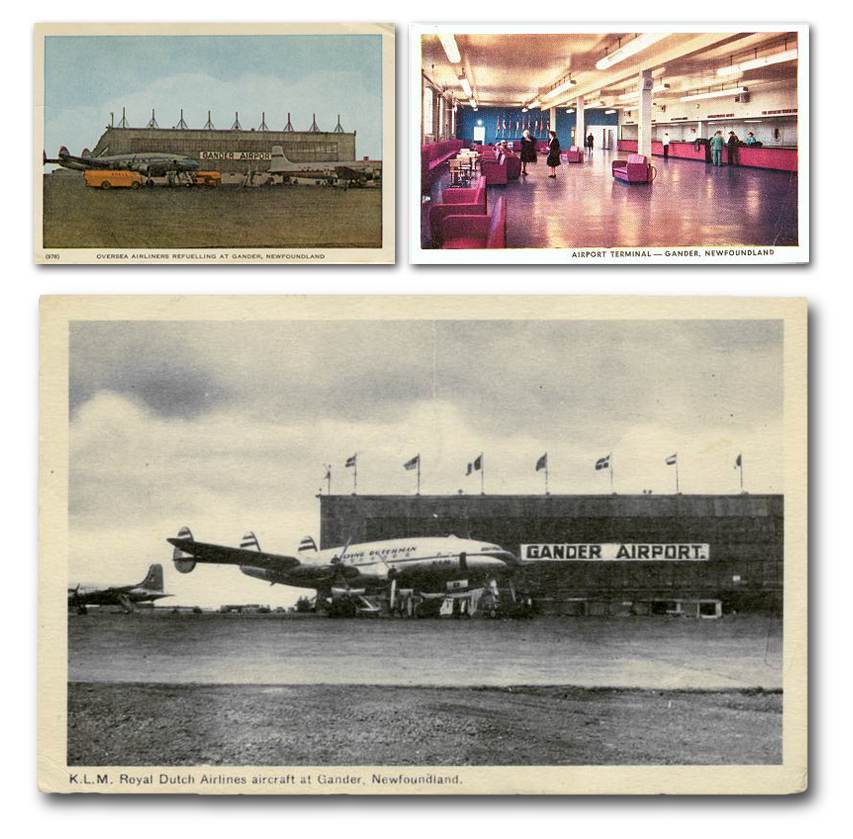Consternation on a Constellation — Flying from Curaçao to Amsterdam in 1948 (Part 3)
We were on our way to the Netherlands at last.
When we had been airborne about two hours, an announcement was made: On arrival at LaGuardia, all of us passengers would be transported by bus to a nearby restaurant and provided with supper vouchers. In the meantime aircraft maintenance engineers would have another look at how well the repairs were holding up.
The flight to LaGuardia was uneventful apart from a few bumps in the air due to minor air turbulence. In all likelihood this could be attributed to the warm air over the Caribbean Sea for there were no major storms or hurricanes in our flight path. As a result a few passengers suffered minor airsickness.
Arriving at LaGuardia
Disembarking from the aircraft and transferring to a passenger coach was a routine matter at LaGuardia Airport. In no time all the passengers were comfortably seated in the restaurant of the New Yorker hotel and the atmosphere of being on a real, carefree vacation was beginning to sink in.

Off to Gander
Once the meal was completed we were bussed back to our embarkation point. We boarded our Royal Dutch Airlines Constellation that was just waiting for us on the tarmac and ready to take to the skies on our next leg to Gander.

At Gander, we would be provided with a snack and refreshments at the main terminal. In the meantime the aircraft would be refuelled for the long crossing of the Atlantic Ocean; Schiphol Airport just at the outskirts of Amsterdam was our final scheduled stop.
The flight to Gander was uneventful, and approximately two hours before landing the passengers were asked to sign the guest book and give the company feedback about the comforts of the airplane, the flight, and the service that the steward and stewardess had provided.
Overall the comments were favorable apart from some minor complaints about the delays from passengers who had small children. One of the adult passengers even commented that he felt that the flight would have been upsetting to small children under normal air travel conditions.
The majority of the passengers who, like my parents, had to wait from 1944 to 1948 to make this trip due to the interruption of the Second World War, had no major problems with the delay that we had encountered. The engine problems that had been encountered at the Hato Airport were not even commented on as the passengers felt that the airline had gone out of their way to ensure that the passengers had a pleasant and above all a safe flight.
We arrived at Gander in the late evening. The stopover was uneventful, except that none of the passengers was dressed for the extremely cold spring weather conditions at the airport. The snow was still on the ground and a cool breeze was blowing from the Atlantic Ocean.

The short walk from the aircraft to the terminal building was an experience for all of us who had just left a tropical climate and had not encountered any weather colder than 17 degrees Celsius for years.
After a some refreshments and a short period of lounging around, we departed on our last leg of the flight across the Atlantic Ocean.
Next, in Part 4: Ben relates his family’s troubled flight between Gander and Prestwick, Scotland, where they land for emergency repairs after one of the Constellation’s four engines has to be shut down over the mid-Atlantic.